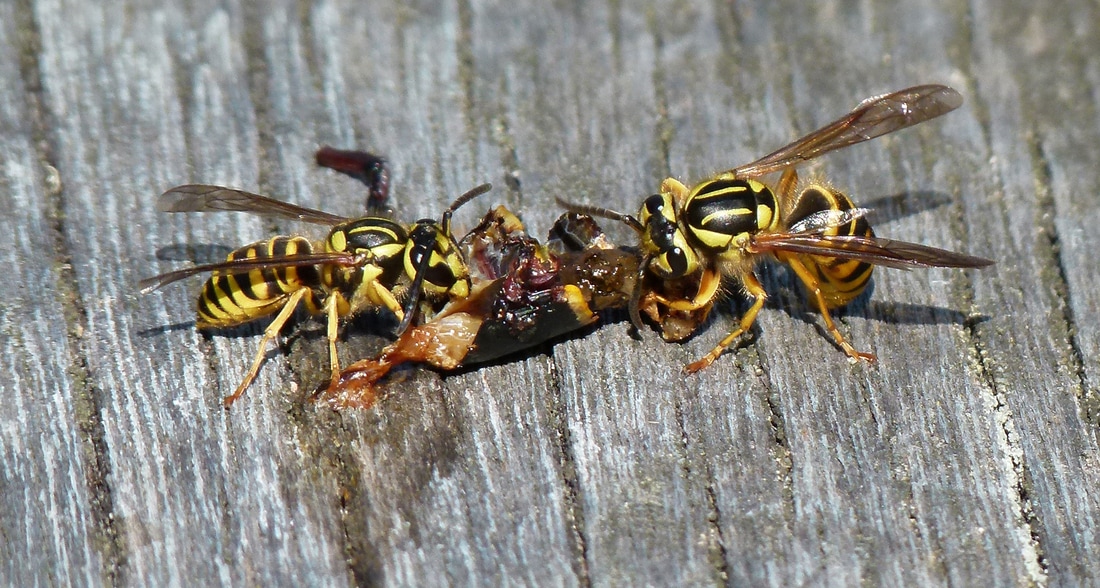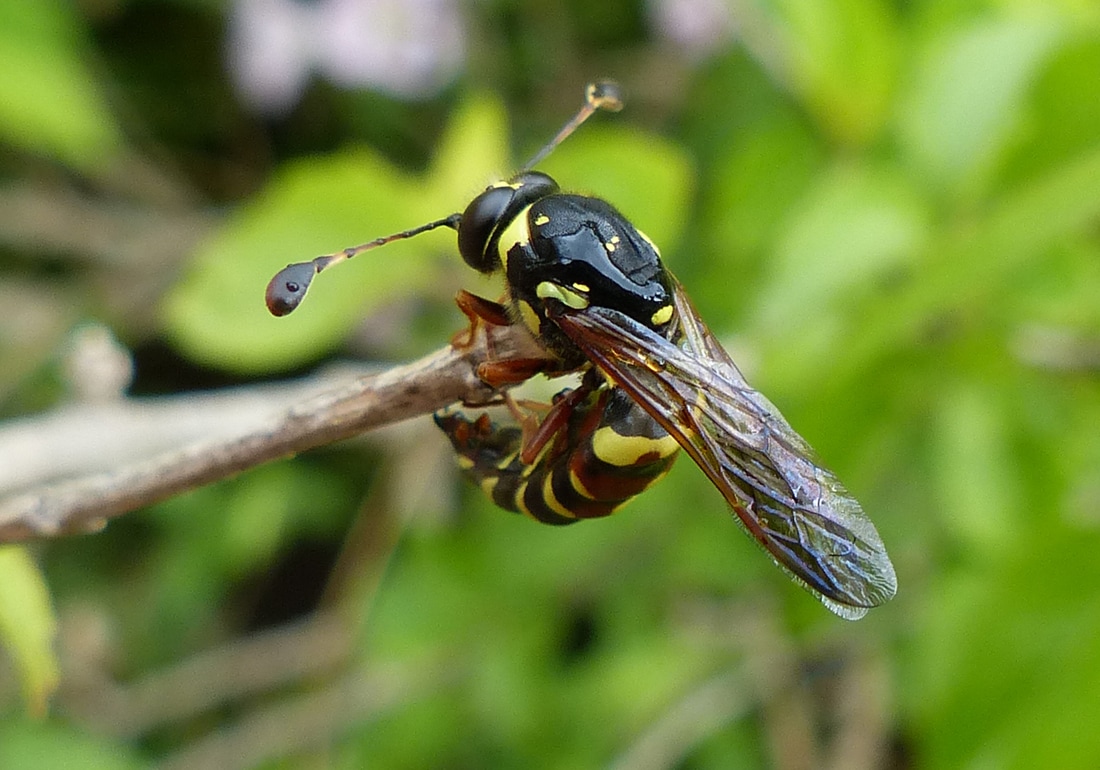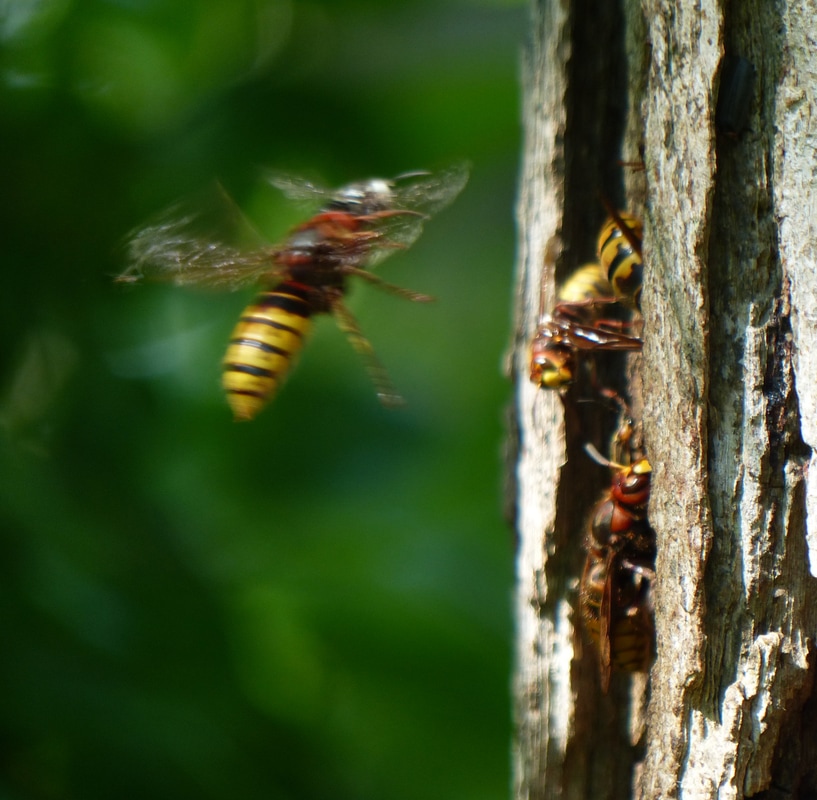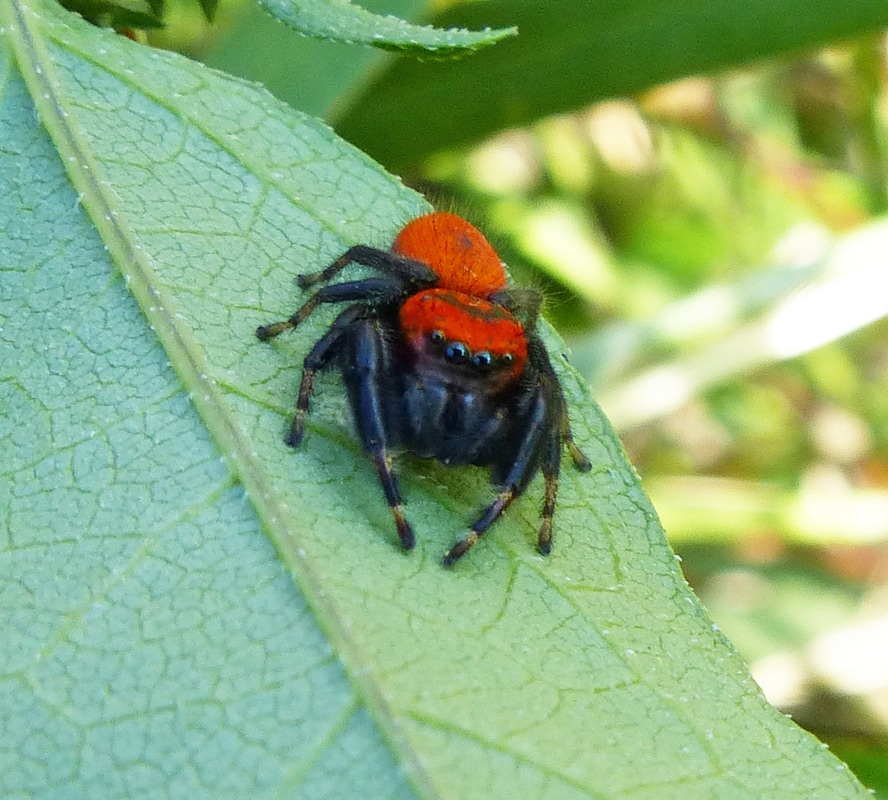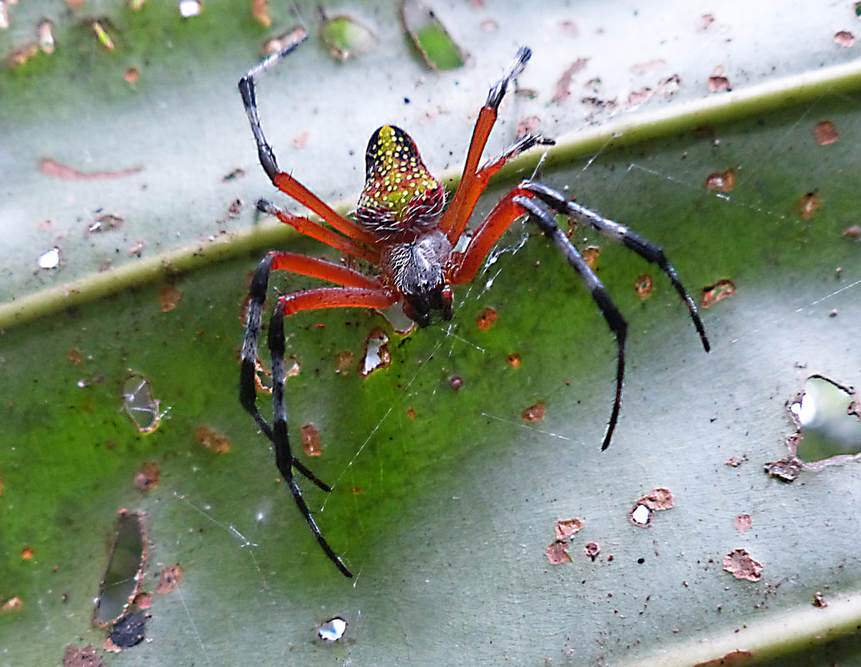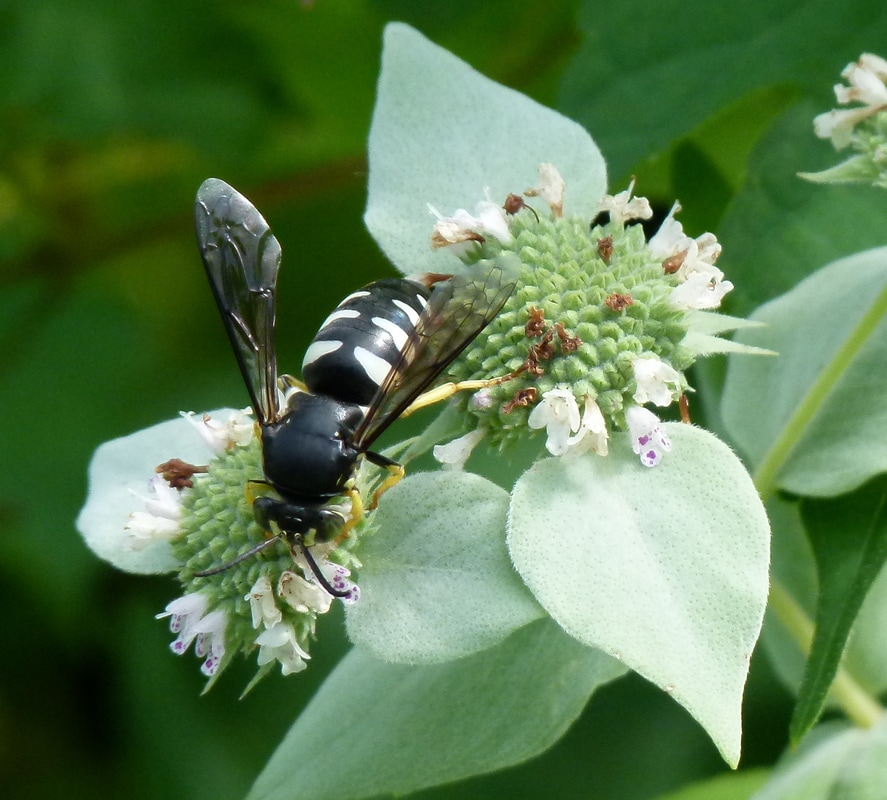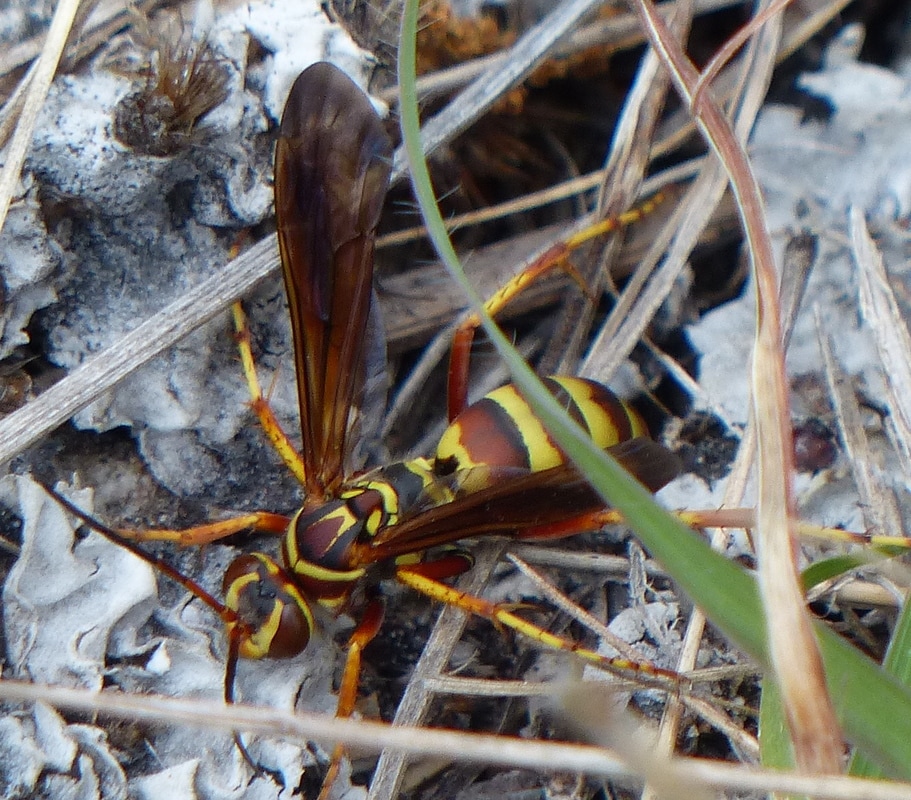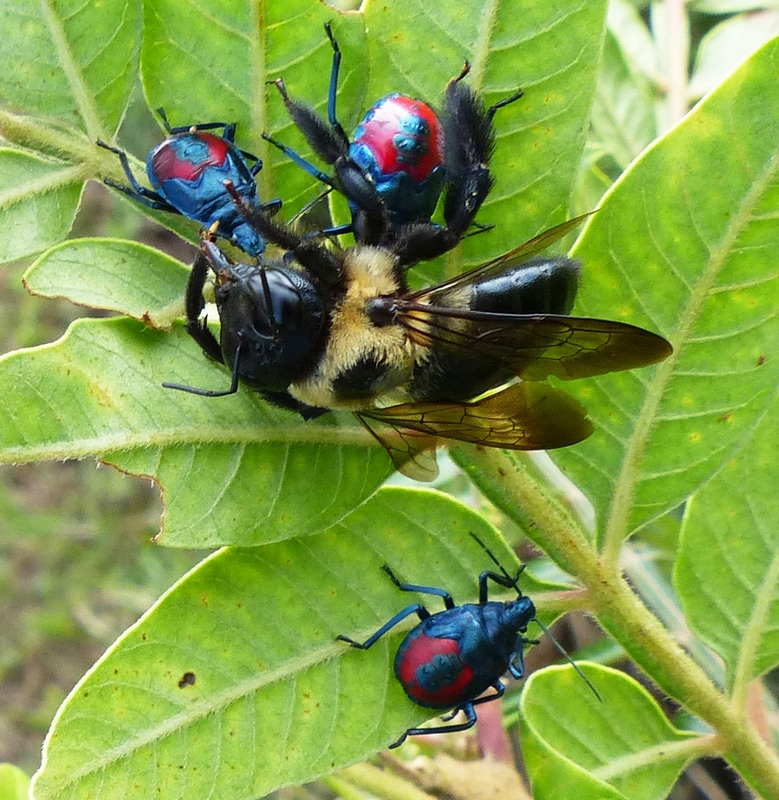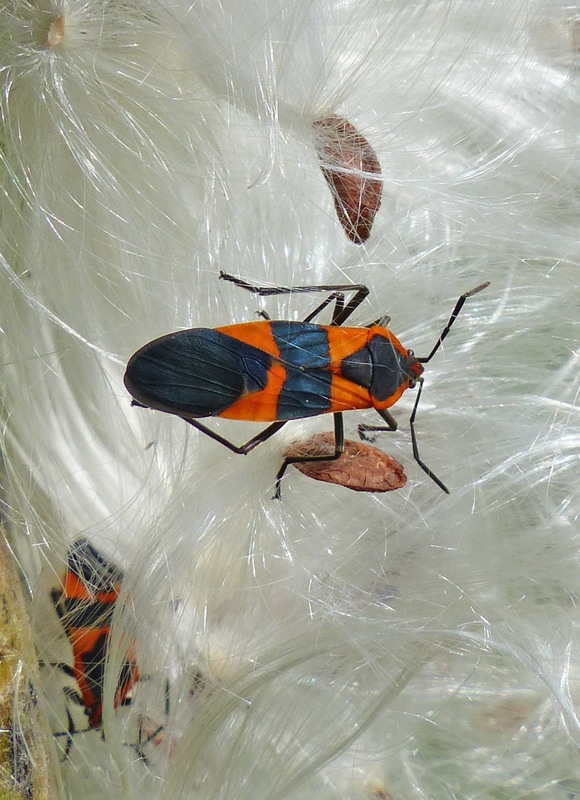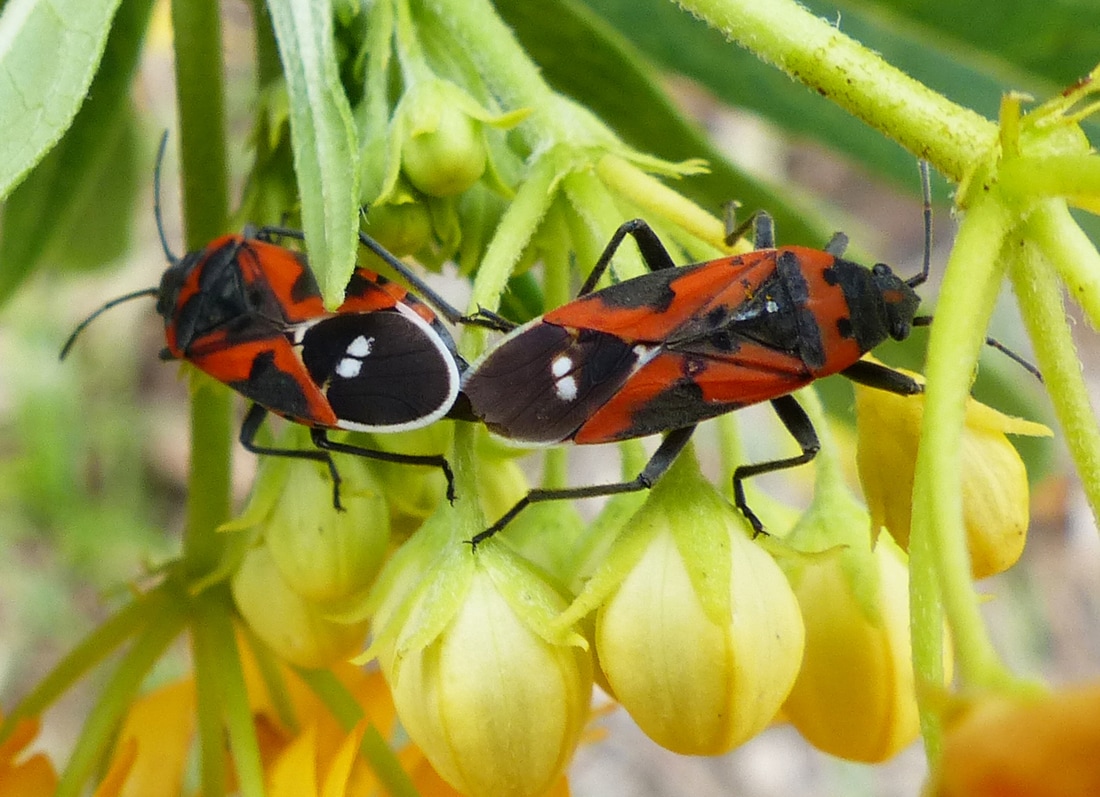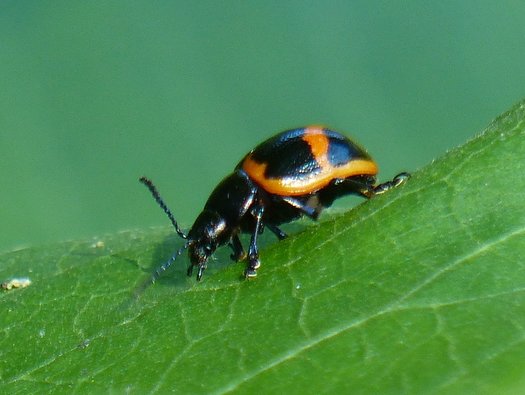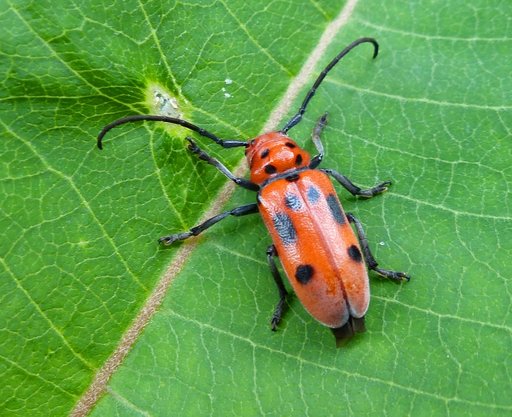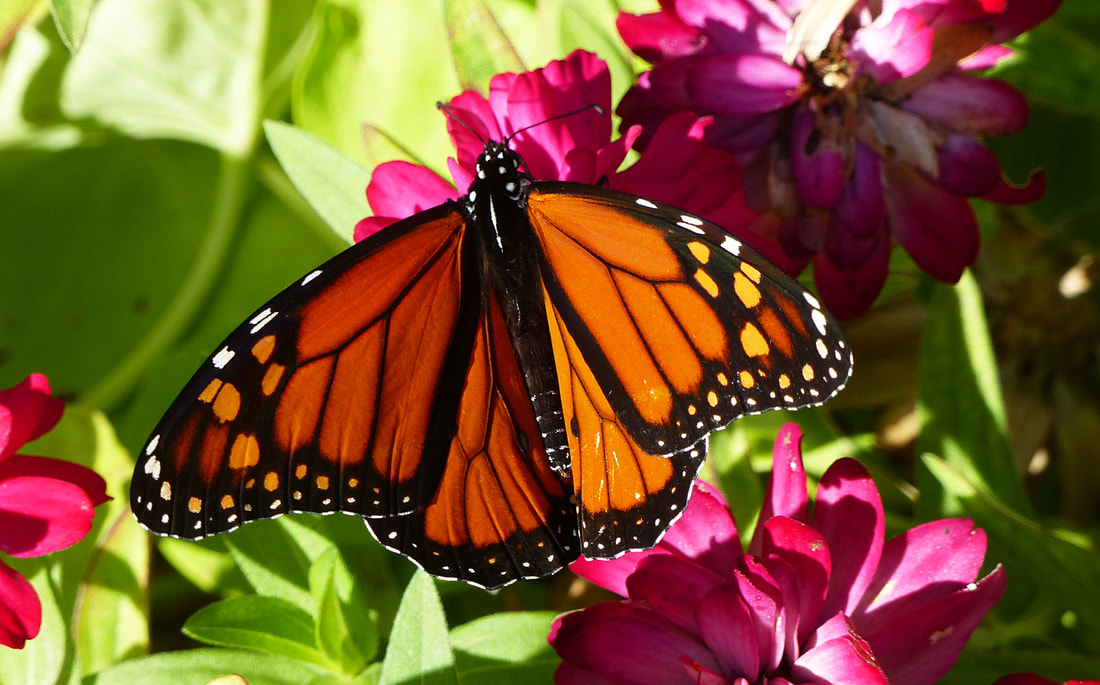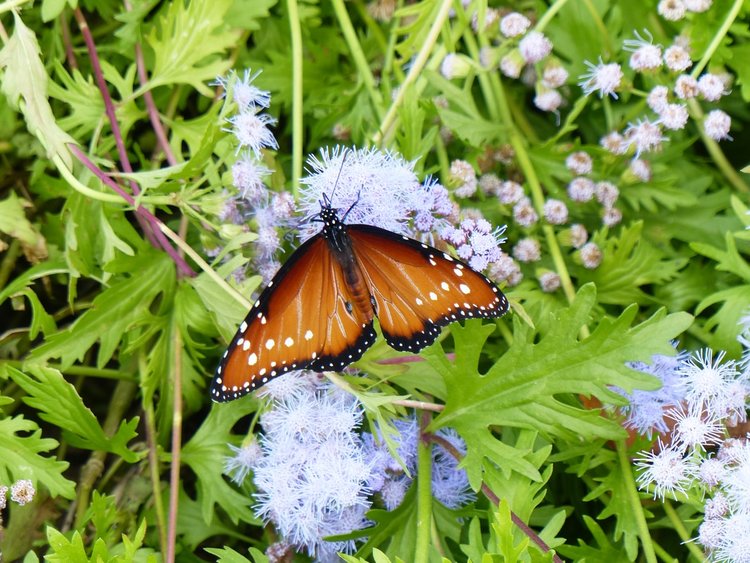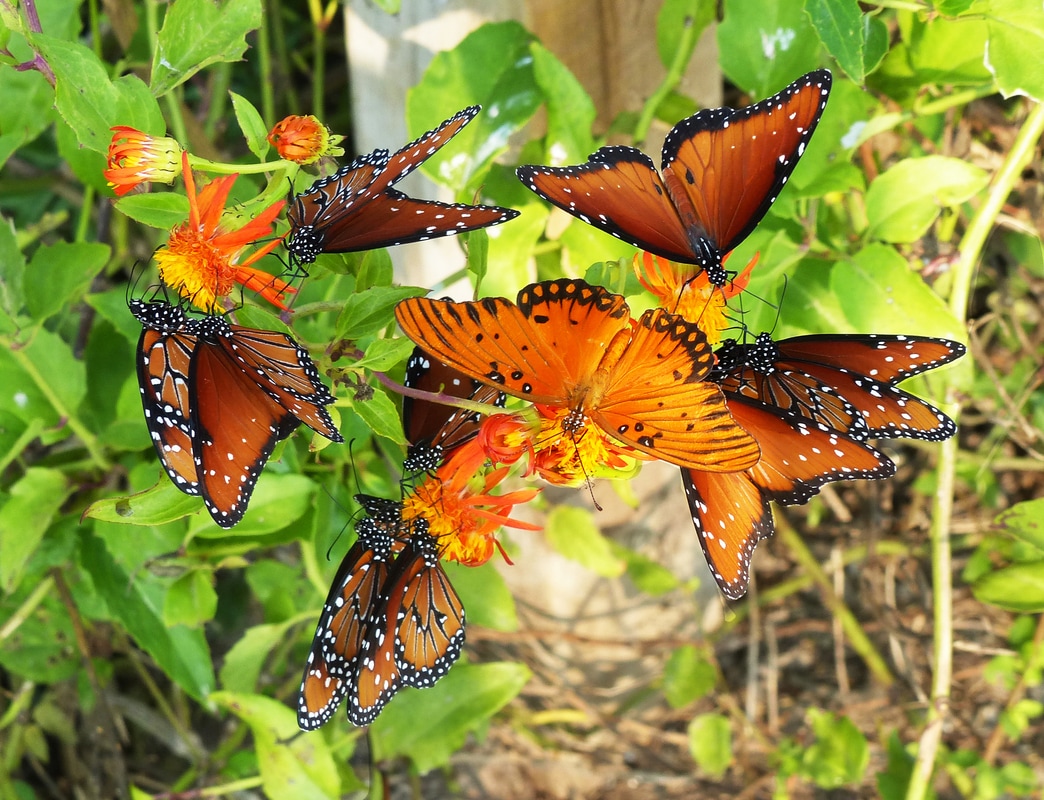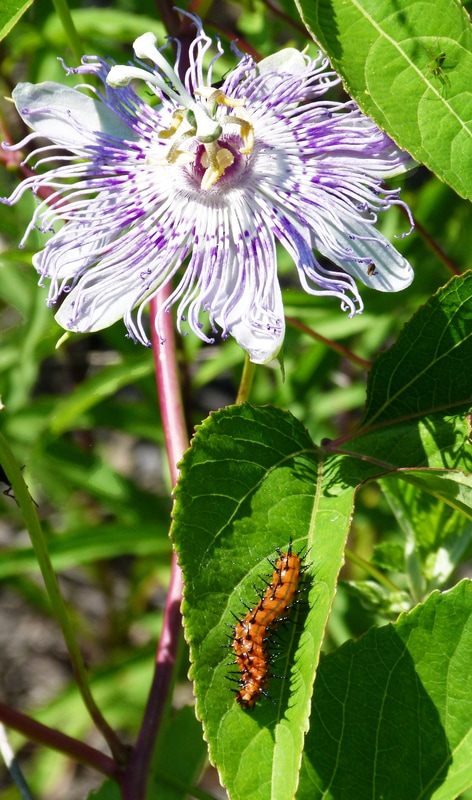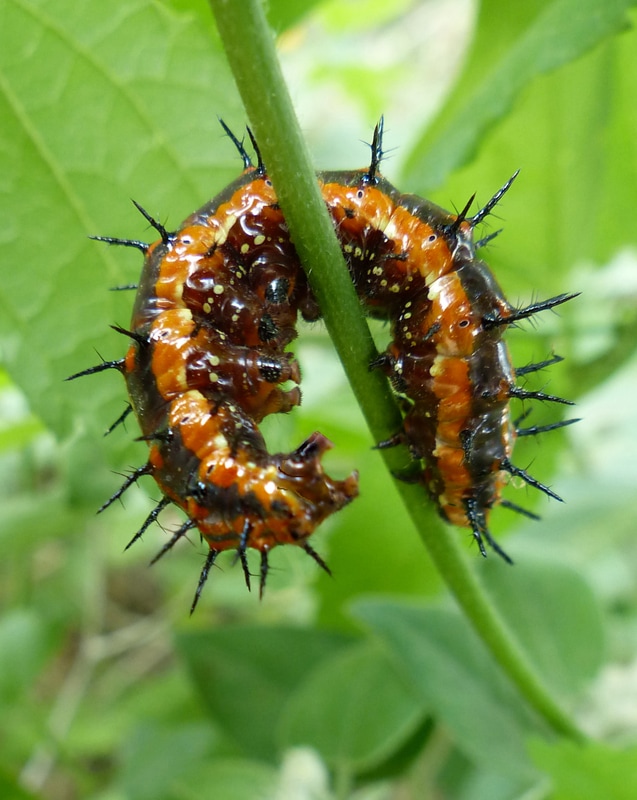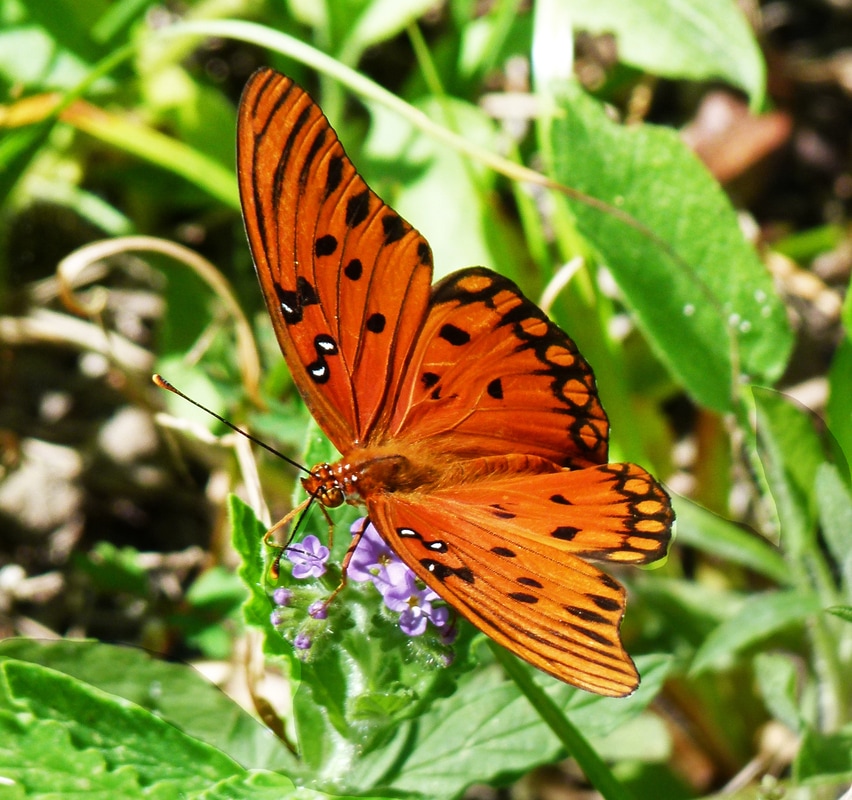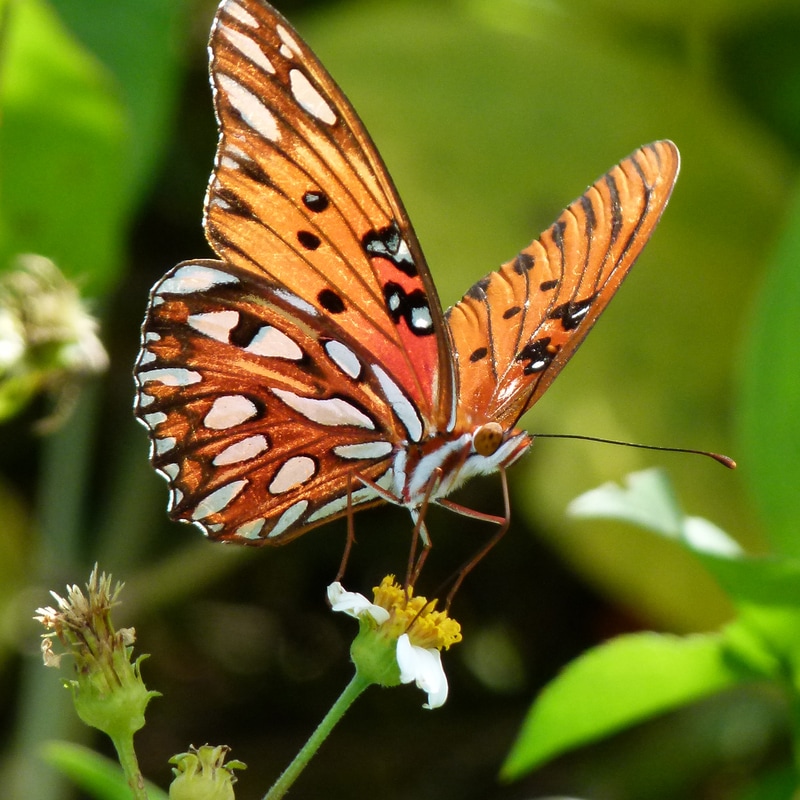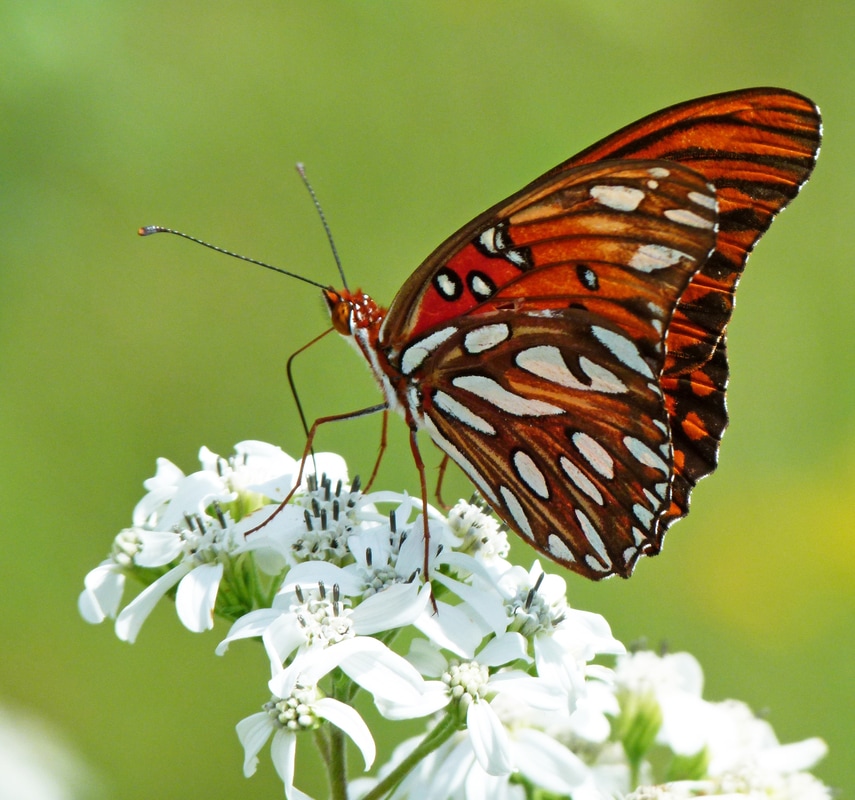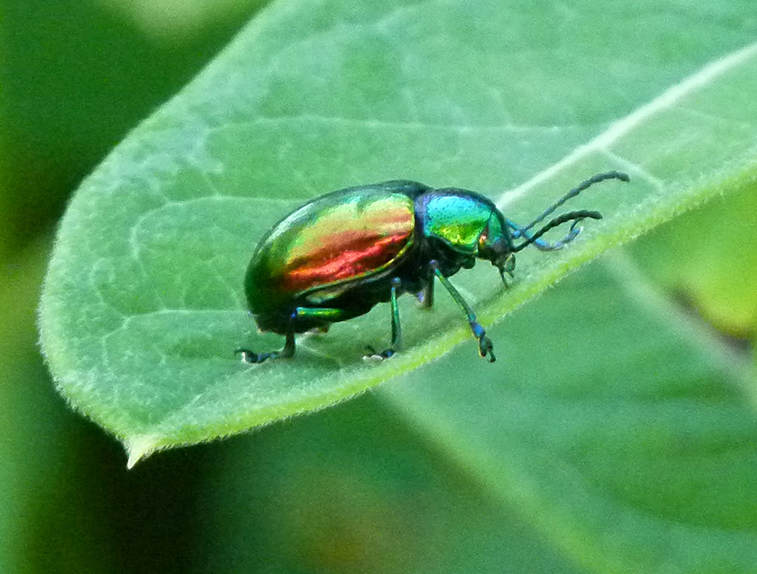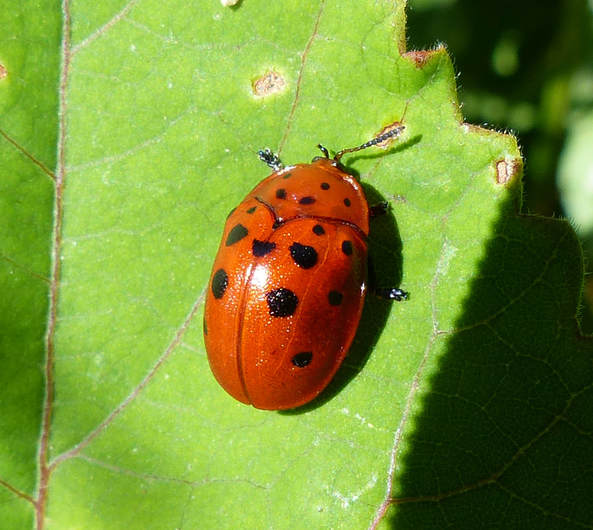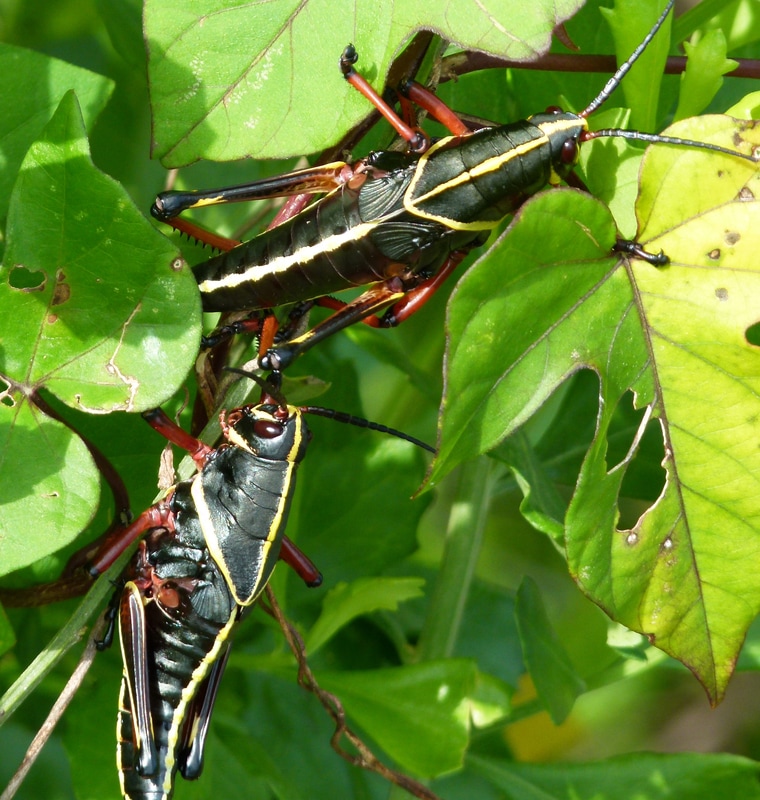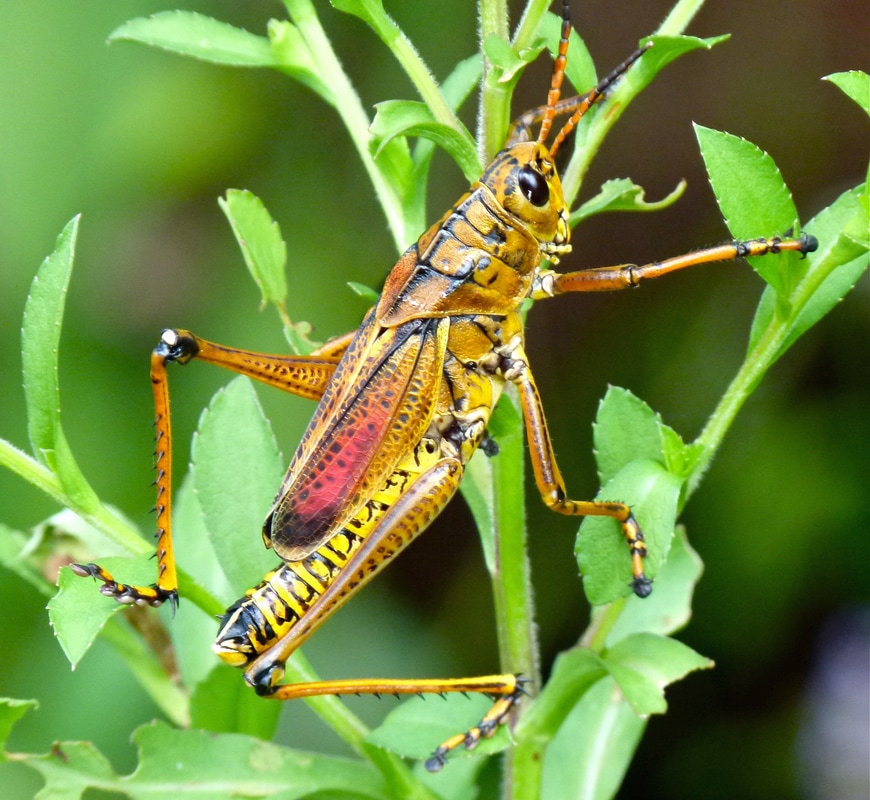WARNING COLORS
Not all insects hide to avoid being eaten. Many advertise their existence with bright colors, markings, and bands that say DANGER. These insects sting or bite or taste bad. Predators that have bad experiences with these insects often learn to avoid them in the future.
Click on a photo to make it larger.
INSECTS THAT STING OR BITE
Would you try to pet these insects? Have you ever thought why you know to avoid them? Their many predators are also alerted by their coloration and banding.
INSECTS THAT ARE DISTASTEFUL OR POISONOUS
And then there are insects that humans need not fear, whose bright colors are a warning to other insects both that they are unpalatable and may eat them.
The colorful insects below eat plants that contain poisons, sequester or hoard the toxins in their bodies, and become poisonous or foul-tasting themselves. Predators learn to associate their bright colors with bad tastes or even harmful physical reactions and learn to stay away from them.
The colorful insects below eat plants that contain poisons, sequester or hoard the toxins in their bodies, and become poisonous or foul-tasting themselves. Predators learn to associate their bright colors with bad tastes or even harmful physical reactions and learn to stay away from them.
Insects That Eat Milkweed
If you are lucky, you will find a variety of brightly colored insects on milkweed plants. Milkweed contains cardioactive glycosides or cardenolides, which can be toxic to some animals. Both the larvae and adults eat milkweed, sequester the toxins in their wings and exoskeletons, and become toxic to predators. Their coloration broadcasts a warning to any animal that is considering making them a meal.
If you are lucky, you will find a variety of brightly colored insects on milkweed plants. Milkweed contains cardioactive glycosides or cardenolides, which can be toxic to some animals. Both the larvae and adults eat milkweed, sequester the toxins in their wings and exoskeletons, and become toxic to predators. Their coloration broadcasts a warning to any animal that is considering making them a meal.
More Insects That Are Distasteful or Poisonous
Pipevine Swallowtail caterpillars eat the poisonous Pipevine plant. Gulf Fritillary Caterpillars eat passion vine, which also contains poisons. Dogbane Beetles eat toxic dogbane. Because of this food source, both the caterpillar and adult are unpalatable and toxic to predators.
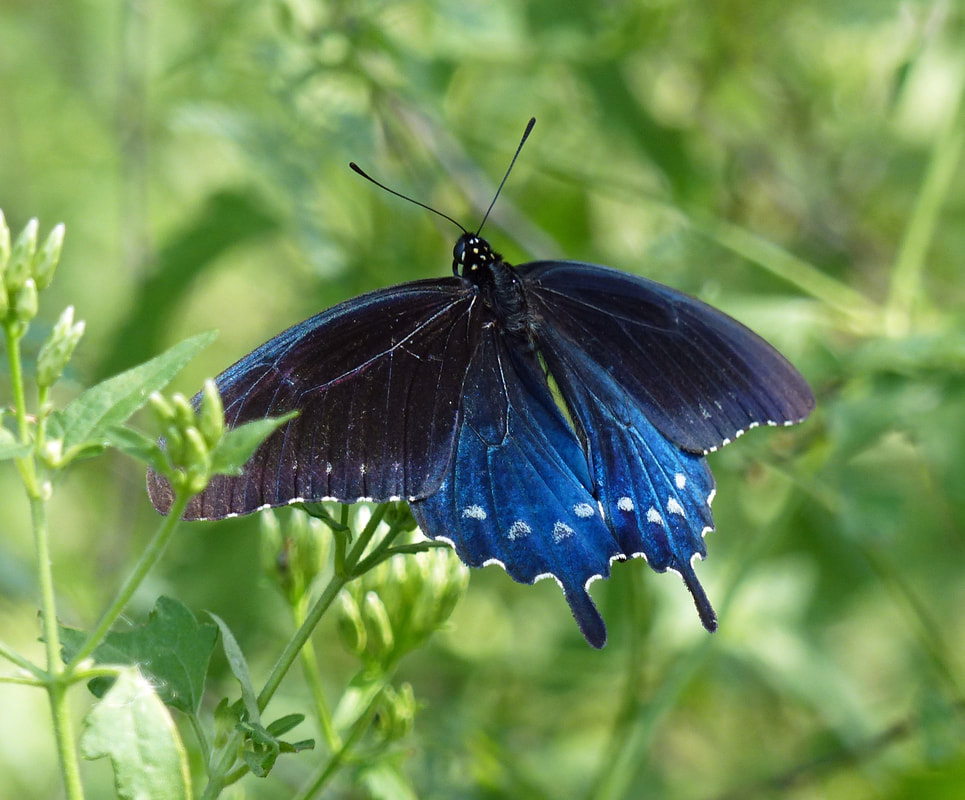 Predators avoid the beautiful Pipevine Swallowtail Butterfly (Battus phlenor).
Predators avoid the beautiful Pipevine Swallowtail Butterfly (Battus phlenor).
Eastern Lubber Grasshoppers
Both Lubber Grasshopper nymphs and adults are hard to miss, because they are so large and colorful. This beauty is a warning to their predators, birds and lizards, that they are unpalatable, even poisonous to eat. As a more dramatic deterrent, lubbers produce a foamy, foul-smelling secretion when disturbed, and they hiss.
